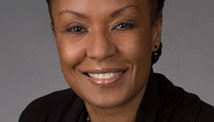Why the marriage gap is bad for America

- Leah Ward Sears: Research shows lower income people less likely to get married
- Those who marry raise children who tend to fare better, she says
- Sears: Strengthening marriage is key to bolstering the middle class
Editor's note: Leah Ward Sears is a retired chief justice of the Georgia Supreme Court and a partner at the Atlanta office of Schiff Hardin LLP. She also is the William Thomas Sears Distinguished Fellow in Family Law at the Institute for American Values.
(CNN) -- Over the past 40 years, marriage has foundered among the poor, with the nation's attention especially focused on the decline of marriage in poor black communities. But an important new report finds that "the retreat from marriage has now clearly moved into the precincts of [both] black and white Middle America."
The report, "When Marriage Disappears: The Retreat from Marriage in Middle America," was released by the National Marriage Project, a nonpartisan initiative at the University of Virginia directed by family scholar W. Bradford Wilcox.
Wilcox's study finds that over the last 30 years, among what the report calls "Middle Americans" (the 58% of moderately educated Americans who have a high school degree), the proportion of children born outside of marriage skyrocketed from 13% to 44% while the portion of adults in an intact first marriage dropped from 73% to 45%.
Meanwhile, among financially well-off Americans (the 30% who have a college degree or higher), the proportion of children born outside of marriage climbed only slightly from 2% to 6%, the divorce rate dropped from 15% to 11%, and intact first marriages dropped from 73% to 56%.
In sum, the relationships of Middle Americans increasingly resemble those of the poor, while marriages among upscale Americans are getting better in many respects.
As a divorcee myself who, for a time, reared my children alone before my remarriage 13 years ago, I know all too well that the rise in children born outside of marriage and the high divorce rate call for compassion. While we must help people in all types of family situations, we must not turn a blind eye to the social injustice of the growing, class-based marriage gap.
The retreat from marriage in Middle America is not a retreat from bearing children. Wedding bands may be out of vogue, but in Middle America, women pushing strollers, diaper bags slung over their shoulders, infants hidden in bundles of blankets, are as common a sight as ever.
But children who grow up in Middle America today are far less likely to grow up with their own parents than they were 30 years ago. By contrast, a greater proportion of children in upscale America live with their mothers and fathers today than they did 30 years ago.
Wilcox found that Middle Americans appear to be becoming less "marriage-minded" in some respects than upscale Americans. While 76% of teenagers from upscale America said they would be embarrassed if they got (or got someone) pregnant, for example, 61% of Middle Americans said the same.
This is important because, as Wilcox notes, the social science evidence today is indisputable: Children who grow up in intact, married families are significantly more likely to graduate from high school, find work and enjoy a stable family life, compared with their peers who grow up in broken families.
The class-based marriage gap is also an injustice because most Americans still seem to desire a happy marriage. Wilcox found that the vast majority of Americans of all classes still say marriage is "very important" or "one of the most important things" to them.
But while they long for it, few in Middle America today have good models or the confidence that their relationships are strong enough to last: 43% of Middle Americans agreed that marriage has not worked out for most people they know, while 17% of upscale Americans agreed.
What should we do?
We don't go about insisting that the poor are better off left alone in their poverty -- as if this were a state they chose and should remain in. Instead, we recognize poverty as an injustice. We set about helping the less fortunate find fortune.
It's the same with the growing, class-based marriage gap. We can't just put a bandage on the injustice by, for instance, providing support groups only to single parents, albeit support groups certainly can help. Instead, we should help couples, too, achieve the stability for which they long.
This means, among other things, reconnecting marriage and parenthood in the public imagination, encouraging both religious and secular civic organizations to reach out to Americans from less-privileged backgrounds, and also urging state lawmakers to reconsider how existing divorce laws are helping -- or hurting -- our families.
Strengthening marriage and parenthood are key to renewing a broad and flourishing middle class. As Wilcox notes, marriage "has long served the American experiment in democracy as an engine of the American Dream, a seedbed of virtue for children, and one of the few sources of social solidarity in a nation that otherwise prizes individual liberty."
Marriage today is all of those things -- for upper-class Americans. Our challenge is to extend the benefits of married life once again to all.
The opinions expressed in this commentary are solely those of Leah Ward Sears.
